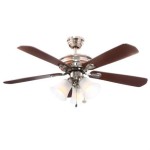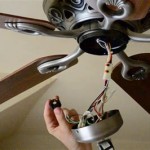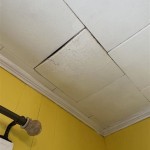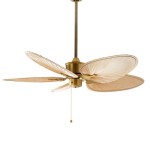Antique Glass Shades for Ceiling Lights: A Timeless Elegance
Antique glass shades for ceiling lights offer a unique blend of historical charm and functional illumination. These shades, crafted with techniques and designs from bygone eras, provide a distinct aesthetic that differentiates them from modern lighting options. The appeal lies in their ability to transform a simple light fixture into a statement piece, adding character and sophistication to any room. Understanding the nuances of antique glass shades, from their historical context to their material composition and design variations, is crucial for both collectors and those seeking to incorporate vintage elements into their home decor.
The history of antique glass shades is deeply intertwined with the evolution of lighting technology. As gas and electric lighting became more prevalent in the late 19th and early 20th centuries, the demand for decorative and functional shades increased dramatically. Glassmakers responded by developing a wide range of designs, utilizing various techniques to create visually appealing and effective shades. These early shades were not merely functional; they were often considered works of art, reflecting the prevailing artistic styles of the time, such as Art Nouveau and Art Deco.
The value and desirability of antique glass shades are influenced by several factors. Rarity plays a significant role; shades produced in limited quantities or by renowned manufacturers command higher prices. The condition of the shade is paramount; chips, cracks, and significant discoloration can substantially devalue an item. The complexity and artistry of the design are also major considerations. Shades featuring intricate patterns, hand-painted details, or unique glassblowing techniques are generally more highly valued.
Identifying an antique glass shade requires careful observation and knowledge of historical manufacturing processes. Examining the glass for signs of age, such as slight imperfections or bubbles, can be indicative of its authenticity. Researching the manufacturer's marks or logos, often found on the fitter rim or other discreet areas, can provide valuable information about the shade's origin and age. Consulting with antique lighting experts or appraisers can also be beneficial in determining the authenticity and value of a suspected antique shade.
Understanding the Historical Styles of Antique Glass Shades
The diverse range of antique glass shades reflects the distinct artistic styles that emerged throughout history. Recognizing these styles is essential for appreciating the historical context and aesthetic qualities of these vintage lighting components.
Art Nouveau, a prominent style from the late 19th and early 20th centuries, is characterized by its organic, flowing lines and nature-inspired motifs. Art Nouveau glass shades often feature floral patterns, swirling designs, and depictions of insects or animals. The use of iridescent glass and the incorporation of hand-painted details are also common features of this style. The emphasis was on creating visually stunning and elegantly crafted pieces that reflected the beauty of the natural world.
Art Deco, which flourished in the 1920s and 1930s, represents a departure from the organic forms of Art Nouveau. This style is characterized by its geometric shapes, streamlined designs, and bold colors. Art Deco glass shades often feature angular patterns, stepped designs, and the use of geometric motifs such as zigzags and chevrons. The emphasis was on creating sleek, modern, and sophisticated pieces that reflected the spirit of the Machine Age.
Victorian-era glass shades exhibit a wide range of styles, reflecting the eclectic tastes of the time. These shades often feature elaborate ornamentation, intricate patterns, and the use of colored glass. The designs can range from delicate floral motifs to more ornate and formal patterns. The emphasis was on creating opulent and richly decorated pieces that reflected the Victorian era’s love of embellishment and grandeur.
Other notable styles include the Mission style, known for its simple, geometric designs and earthy tones, and the Depression-era style, characterized by its functional and affordable designs, often featuring pastel colors and simple patterns. Understanding these different styles allows for a more nuanced appreciation of the artistry and historical context of antique glass shades.
Materials and Manufacturing Techniques Used in Antique Glass Shades
The materials and manufacturing techniques used in the creation of antique glass shades significantly influenced their appearance, durability, and overall value. Understanding these aspects is crucial for identifying, evaluating, and preserving these historical artifacts.
Various types of glass were employed in the production of antique shades, each with its own unique properties and characteristics. Opalescent glass, characterized by its milky white appearance and subtle color variations, was a popular choice for Art Nouveau and Victorian-era shades. Carnival glass, known for its iridescent sheen and vibrant colors, was often used for more affordable and decorative shades. Cut glass, featuring intricate patterns and sharp edges, was a hallmark of high-end shades produced during the late 19th and early 20th centuries.
Several manufacturing techniques were used in the creation of antique glass shades. Hand-blowing, a traditional method of shaping molten glass using air pressure, allowed for the creation of complex and organic forms. Pressing, a more automated process, involved forcing molten glass into a mold, enabling the mass production of simpler designs. Etching, a technique involving the use of acid to create decorative patterns on the glass surface, was often used to add intricate details to shades. Hand-painting, another common technique, allowed for the addition of colorful and detailed designs to the glass surface.
The use of lead in the glass composition was common in many antique shades, contributing to their brilliance and clarity. However, the presence of lead also poses potential health concerns, particularly if the glass is damaged or chipped. It is crucial to handle antique glass shades with care and avoid using them in areas where they might be exposed to excessive moisture or abrasion. Proper cleaning and storage are essential for preserving the integrity and appearance of these historical artifacts.
Caring for and Displaying Antique Glass Shades
Proper care and display are essential for preserving the beauty and value of antique glass shades. These delicate artifacts require special handling and maintenance to prevent damage and deterioration.
Cleaning antique glass shades should be done with caution and gentleness. Avoid using harsh chemicals or abrasive cleaners, as these can damage the glass surface and remove any delicate finishes or hand-painted details. Instead, use a soft, damp cloth and a mild soap solution to gently clean the shade. Rinse thoroughly with water and dry with a soft, lint-free cloth. For stubborn dirt or grime, consider using a specialized glass cleaner designed for antique items.
Displaying antique glass shades in a safe and secure manner is crucial for preventing accidental damage. Avoid placing shades in areas where they are likely to be bumped or knocked over. Consider using a display stand or securing the shade to a light fixture with appropriate hardware. Ensure that the shade is properly supported and balanced to prevent stress fractures or breakage. Protect shades from direct sunlight, which can cause fading and discoloration over time.
Proper storage is essential for preserving antique glass shades when they are not in use. Wrap each shade individually in acid-free tissue paper and store them in a cool, dry place. Avoid stacking shades on top of each other, as this can cause scratching or breakage. Consider using padded containers or boxes to provide additional protection. Regularly inspect stored shades for any signs of damage or deterioration.
Restoration of antique glass shades should be undertaken with caution and only by experienced professionals. Attempting to repair damaged shades without the proper knowledge and skills can often result in further damage or a loss of historical value. A skilled restorer can repair cracks, chips, and other damage using appropriate materials and techniques, preserving the integrity and appearance of the shade.
Incorporating antique glass shades into modern interiors requires careful consideration of the overall aesthetic and style of the room. These shades can be used to add a touch of vintage charm and elegance to any space, but it is important to choose shades that complement the existing décor. Consider the size, shape, and color of the shade, as well as the type of light fixture it will be used with. Experiment with different combinations to create a unique and visually appealing lighting arrangement.

New Modern Vintage Retro Loft Glass Ceiling Lamp Shade Pendant Light Ebay

Buying Vintage And Antique Glass Ceiling Light Shades Hertfordshire Lighting Design

Ceiling Lamp With Original Glass Shade 1910 For Sale At Pamono

Vintage Frosted Clear Glass Shade Light Ceiling Wall Fixture Etsy

5 3 Vintage Clear Wine Cup Glass Lamp Shade Ceiling Pendant Light

151 Vintage Antique Art Deco Glass Shade Ceiling Light Fixture Lamp Chandelier Ebay

Flush Mount Fixture Glass Shade Ceiling Lights Semi Etsy

Vintage 1930 S 1940 Glass Shade For Ceiling Light Etsy Lights Shades Fixtures

Long Vintage Ceiling Lamp With White Glass Shade Metal Fitting For Sale At Pamono

Scalloped Glass Flower Ceiling Light Single Dining Room Hanging Pendant Clearhalo








